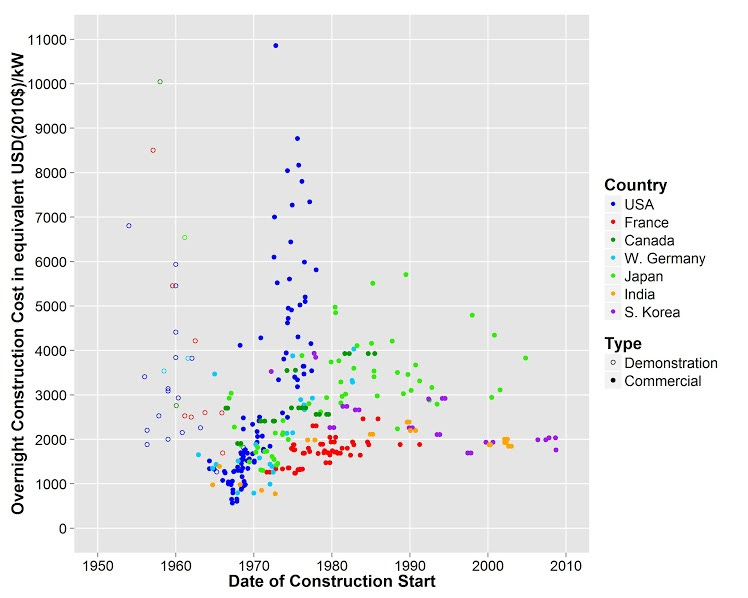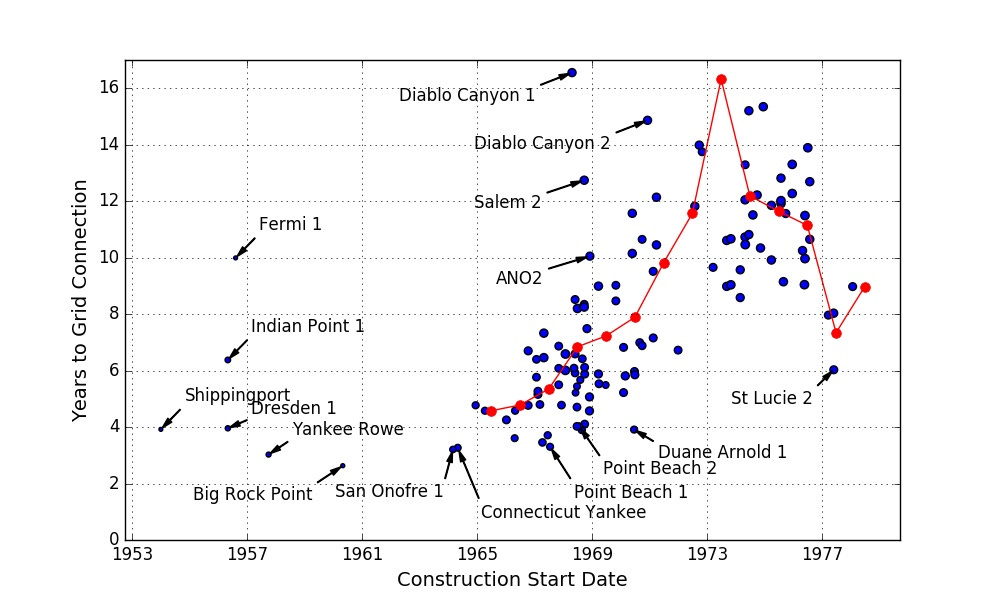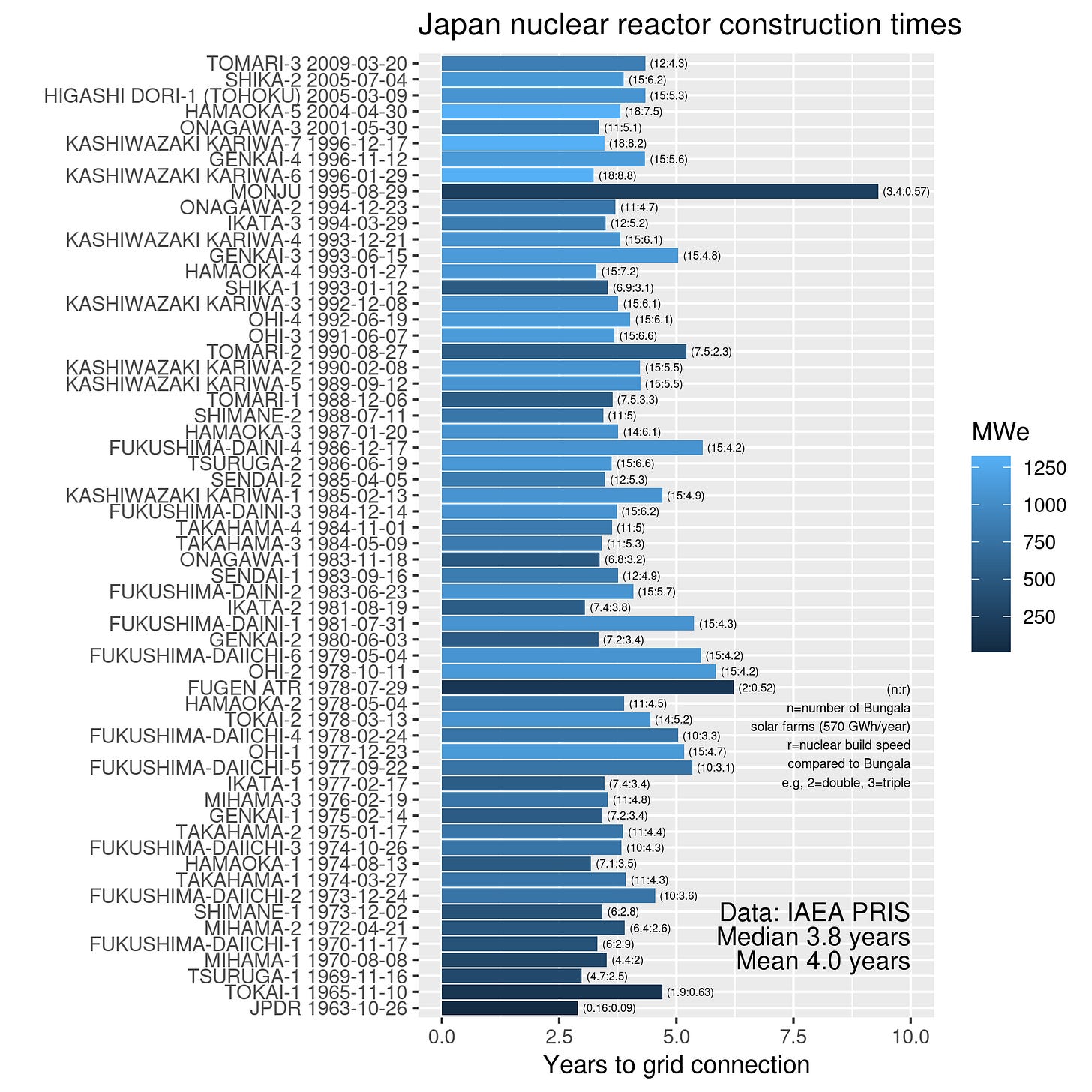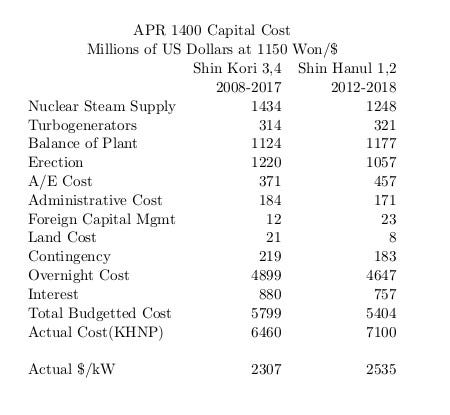Stage 2: Nuclear Power's Economics Suck
This is the second in our three part series about talking with open-minded skeptics about nuclear power. You can download the slide deck from here. You will need to log in, go to the downloads page, and select Slides for Talking Nuclear: Stage 2.
In Stage 1, we addressed nuclear waste and the hazards of a radioactive release. We pointed out that 600 year old spent nuclear fuel is just another poison, since by that time the penetrating form of radiation had decayed away. The aged fuel must be swallowed to do any harm. We renounced the Two Lies with which the nuclear establishment has strangled nuclear power, acknowledging we will have releases, but arguing that even a Chernobyl-like release is roughly equivalent to a bad airplane crash in terms of public Lost Life Expectancy due to radiation harm. Based on past experience, the great bulk of releases will produce no detectable public harm.
Your two skeptics are not sold. They are grudgingly willing to admit that an occasional nuclear power plant release might be tolerable; but only in return for transcendent benefits. They point out nuclear power plant construction takes forever and is prohibitively expensive. You want the human race to pay through the nose for electricity that may never come; and occasionally get blasted with radiation for the privilege? No thank you.
You have no choice but to agree with your combative doubters. Nuclear power in the West is a hopelessly expensive mess. Show Slide 1. Only the wealthiest nations can afford these kind of costs, and then barely. The construction times are such that there is no way nuclear can put a dent in global warming, or anything else. If this is the way things must be, nuclear power is a dead end.
The American Tragedy
But does it have to be this way? A 1 GW coal plant must process, dry, and pulverize roughly 7000 tons of coal per day, collect and and dispose of about 1000 tons per day of solid waste, and try to clean up 84,000 tons of pollutant laden stack gas each day. A 1 GW nuclear plant will burn about 82 kg's of fuel per day, producing the same amount of solid waste. In the 1960's, this 100,000 to 1 advantage in energy density allowed nascent nuclear power, which was just starting down a steep learning curve, to go head to head with coal.
In 1965, GE was able to show TVA that it would produce electricity for less than 3.7 mills per kilowatt hour.1 That's about 2.7 cents per kWh in 2020 dollars. Komanoff, no friend of nuclear power, estimated nuclear's 1971 CAPEX at 366 1979 dollars per kW, and coal without scrubbers at $346/kW.2 Nuclear's fuel cost advantage tipped the cost of electricity in favor of nuclear. In 1970, Paul Ehrlich, a determined foe of nuclear on Malthusian grounds, complained ``Contrary to widely held belief, nuclear power is not now `dirt cheap'. ... At best, both [nuclear and coal] produce power for approximately 4-5 mills per kilowatt-hour."3 In the late 1960's nuclear power was as cheap as coal, when coal was as cheap as it ever was in real terms. What happened?
The Oil Crisis happened. The factor of five increase in oil prices between 1968 and 1974 priced oil out of the power generation market, creating a boom for coal and nuclear. In this frenzy, both coal and nuclear lost control of their costs. This happens whenever a cyclic market goes into boom. In the case of coal, the cost escalation was exacerbated by a series of strikes and a slew of new environmental regulations.
Up until the late 1960's, the Atomic Energy Commission's regulation of nuclear power was a tug of war. Attempts to impose regulatory costs were not only strongly resisted by the industry which was in life or death competition with coal and oil, but the AEC itself was caught between its promotional function and its regulatory function. The result was a balance, and the plants built under that balance have a pretty good safety record. These plants have been producing some of the cheapest electricity ever generated for more than 50 years; and no member of the public has been harmed.
But with the doubling and tripling in coal prices, industry's goal became do whatever you have to do to get the plants built. Rather than pushback against new regulations, no matter how silly or superfluous and engage in time consuming negotiations, the utilities decided to accept anything they thought they could afford, or pass on to the ratepayer.
In 1972, they even swallowed the Double Ended Guillotine Break (DEGB). In this scenario, a section of the primary loop piping instantaneously disappears. Steel cannot fail in this manner. Ted Rockwell put it best, ``We can't simulate instantaneous double ended breaks because things don't break that way." Designing to handle this impossible casualty imposed severe requirements on pipe whip restraints, spray shields, sizing of Emergency Core Cooling Systems, and emergency diesel start up times (11 seconds to load), requirements so severe that it pushed the designers into using developmental, unrobust technology.4 All the money spent on the DEGB probably made nuclear plants less safe A saner approach is Leak Before Break by which the designer ensures that a stable crack will penetrate the piping before larger scale failure.
As soon as one applicant agreed to a requirement, that became the floor for the next applicant. Rules ratcheted upward with each application, forcing continual design changes. In its most pernicious form, backfitting, the new rules were imposed on plants already under construction. A 1974 study by the Government Accountability Office of the Sequoyah plant documented 23 changes ``where a structure had to be torn out and rebuilt or added because of the required changes." In such an environment, costs exploded, Slide 2, and construction time skyrocketed, Slide 3. Plants that took four years or less to build in the 1960's took 8 years or more in the 1970's. Plants that cost less than $2000/kW in the 1960's, cost 3 or 4 times that amount in the 1970's.
In 1979, the world economy went into deep recession. Coal reacted to the new reality and steadily reduced its costs in 1980's and 1990's. But the regulatory ratchet works only one way. We are still stuck with the absurd Double Ended Guillotine Break requirement and all the other superfluous rules. Paperwork labor costs are more than double real labor.5 US nuclear was left stranded with top of the boom costs. It could not and never did recover.
Slide 2. Overnight nuclear plant cost in 2010 dollars as a function of start of construction from {Lovering-2016}. To convert 2010 USD to 2020, multiply by 1.2. Overnight costs exclude interest during construction.
Slide 3. USA Build Times. Red dots are average for that start year. Area of blue dots is proportional to plant capacity. 17 years and more not shown. Data from IAEA PRIS database.
The French Experiment
France in the 1970's is another example of what is possible. During that period, France, the red dots in Slide 2, was able to hold her nuclear CAPEX to around $2000/kW in 2020 dollars. At the time, France was adding 35 TWh's of new nuclear power production each year. France decarbonized her grid at the rate of 10% per year. For 40 years, France has enjoyed some of the cheapest electricity in non-Scandinavian Europe, and profitably exported power to her neighbors. But a monopoly based, domestically focused program could not survive its own success. By 2000, everything had fallen apart. French nuclear costs and build times are now as bad as the American.
Slide 4. French Build Times.{Grubler-2010}[Fig 3] Data from IAEA PRIS database.
Japan: success until a release
Between 1970 and 2009, the Japanese built 56 nuclear power plants. The average build time was 4 years, Slide 5. Nuclear power provided Japan's cheapest electricity. After Fukushima, everything changed. Perfectly serviceable plants were shut down. The average cost of power generation went from 8.6 to 13.5 Y/kWh (65 to 105 $/MWh). A completely independent Nuclear Safety Authority was given final say in the approval of any restarts. So far restarts have been more than matched by retirements, Slide 6. The Fukushima release, which will result in no detectable radiation harm to the public, has crippled Japanese nuclear, possibly permanently.
Slide 5. Japanese NPP Build Times. Graph courtesy Geoff Russell. Data IAEA PRIS.
Slide 6. Japanese Operable Nuclear Capacity. Source WNA.
South Korean Roller Coaster
Currently, the Koreans have the most successful nuclear program in the Free World. In 2016, they were able to build plants at an overnight CAPEX of around $2000/kW, Slide 7. That is fully competitive with coal. The program was put on hold by the anti-nuclear Moon administration from 2017 to 2022. The current administration has pledged to revitalize the nuclear program. There is no technical reason why they cannot; but, with the Koreans objecting to preposterously trivial releases of tritium, it seems unlikely the Korean effort can survive the next real release.
Slide 7 Korea APR1400 Cost Breakdown z{Choi 2017, Nuc Eng & Tech, 49 Table 5}
China replacing coal with nuclear
The Chinese are ramping up their nuclear program big time. They think nuclear is cheaper than coal and it is a heck of a lot cleaner. They plan to bring 150 GW on line between now and 2035, Slide 8. Nuclear skeptic Blomberg NEF puts their overnight CAPEX at between $2500 and $3000/kW. The Chinese are claiming $2350. This is cheaper than coal. The new Hualong 2 design is targeting $2000/kW and a four year construction time.
Slide 8. Chinese Nuclear Capacity Schedule.
Takeaways
Nuclear power is not inherently expensive. Even under current US regulations, a nuclear power plant requires less resources to build than a coal plant, Slide 9, and far less resources to operate. Nuclear power should be cheaper than coal.
Slide 9. DOE Estimate of Resources per Terrawatt-hour.{DOE-2015}[Table 10.4]
The core problem is any release of radioactive material is regarded as intolerable. As long as this is the case, any expenditure which might conceivably reduce the probability of a release can be justified. But such thinking quickly pushes the cost of nuclear power up multiple times, making nuclear prohibitively expensive.
This brings us back to Stage 1. Did we not agree that an occasional release, most of which will produce no detectable public harm, is tolerable? If that is the case, imposing these tragically wasteful costs on nuclear power is what is intolerable.
Bupp, I. and Derian, J. Light Water, How the Nuclear Dream Dissolved. Basic Books, 1978. Page 90.
Komanoff, C. Power Plant Cost Escalation. Van Nostrand, 1981. Page 20.
Ehrlich, P. and Ehrlich, A. Population Resources Environment. W H Freemans, 1970, Page 57
Okrent, D. Nuclear Reactor Safety, Univ of Wisconsin Press, 1981. Page 138.
Cohen, B. The Nuclear Energy Option. Plenum Press, 1990. Page 148.











Very impressive and useful research.
Aside regarding Double Ended Guillotine Break (DEGB): The requirements associated with that absurd scenario are what drove mPower, NuScale, GE, Westinghouse, and Holtec to come up with novel and surprisingly expensive light water reactor designs that use integral pressure vessels that allow them to virtually eliminate primary piping.
It's a lot easier and cheaper to manufacture smaller, separate pressure vessels for the reactor, pressurizer and steam generators and connect them up with pipes, valves and pumps than to try to cram everything into a very tall vessel. O&M is also easier (aka cheaper).
Source: 3 yrs worth of engineering discussions at B&W mPower